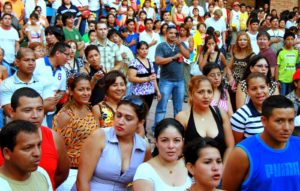
In the 1970’s, Latino advocacy groups grew fed up with the U.S. Census Bureau, who had up until then only made a half-hearted attempt to quantify the number of Latinos and Hispanics living in the United States. Groups, including the Mexican American Legal Defense and Educational Fund (MALDEF) and ASPIRA, complained that the census only had a question that went to 10 percent of households, and there had not previously been Spanish language content.
The lack of a mobilization campaign prompted Latino advocacy groups to lobby the federal government to create a separate category for counting Hispanics and Latinos. Prior to this, Latinos and Hispanics had been classified as white.
The push for people of color to be accurately counted has always been highly important for ethnic minority populations in order to secure federal funding and influence how Congressional and other voting districts are drawn.
Since Latino advocacy groups accomplished getting Latinos and Hispanics to be accurately counted, the shift has now changed to ensuring the count accurately reflects the Latino community’s diversity as well as it’s demographic ascendance. The 2020 census expects to introduce a question that allows residents to report their identities on a more granular level, that accounts for the full complexity of their racial and ethnic identities.

Recent Comments